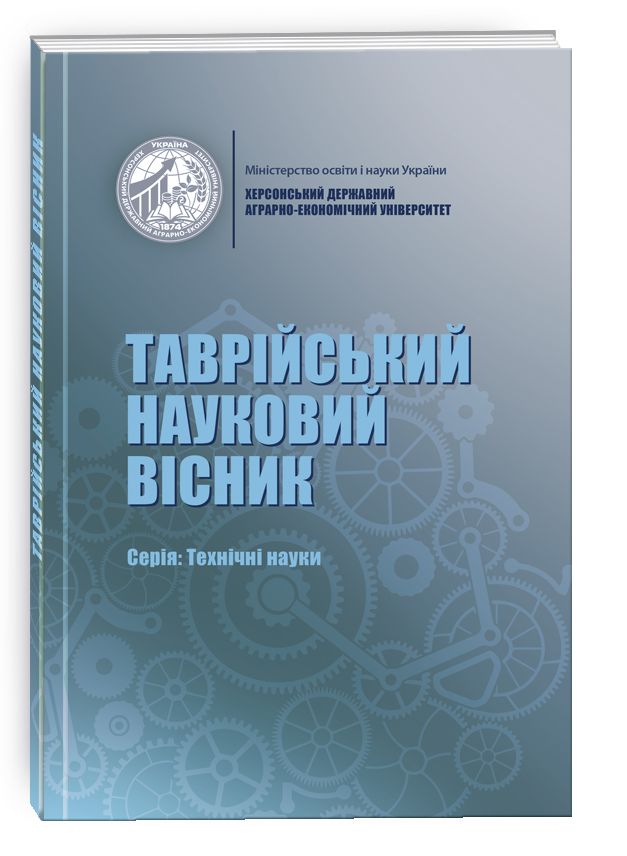RESEARCH OF THE INFLUENCE OF ULTRASONIC EQUIPMENT ON THE QUALITY OF MAYONNAISE
DOI:
https://doi.org/10.32782/tnv-tech.2023.4.13Keywords:
mayonnaise, sauce, emulsion, homogenizer, ultrasound, safety, microorganismsAbstract
Mayonnaise is the most extended emulsion of the “oil in water” or “water in oil” type. This product is produced with different fat content, therefore, in order to ensure the necessary consistency of quality, it is necessary to correctly select the recipe composition and technological equipment for homogenization. Taking into account all technological features, it is advisable to solve the issue of the influence of ultrasonic exposure on the quality and shelf life of the finished product. The method of work is to study the influence of ultrasonic homogenizers on the quality and safety of mayonnaises of different fat content. Ultrasonic processing is an ecological technology and one of the new methods of food preservation. The mechanism of the antimicrobial function occurs in the liquefaction of cell membranes and the destruction of the cell walls of microbes, local heating and the production of free radicals. The most optimal is the homogenization of the mayonnaise mass at wave frequencies from 22 kHz to 40 kHz and duration from 5 to 15 min (pulse duration of 2 s and off 2 s). Test samples of mayonnaise were obtained using the following parameters: frequency – 22 kHz, duration – 15 minutes. Examination of test and control samples did not reveal pathogenic organisms, the bacterial group of Escherichia coli and mold fungi during the entire storage period. A significant reduction in culture was found in the sonicated samples compared to the control sample. So, ultrasonic treatment promotes the development of microorganisms that work on the quality and safety of these products. According to these indicators, no sharp differences were found in the studied samples. Therefore, it is possible to assert the perspective and expediency of using ultrasonic homogenizers in the production of products of different fat content. Thus, it was concluded that ultrasonic treatment is a safe method for the production of emulsion products of different fat content, without affecting quality and safety. It is also worth noting that the use of ultrasonic homogenizers allows you to reduce production costs and save resources.
References
Mohammed N.K, Ragavan H., Ahmad N.H., Hussin A.S.M. Egg-free low-fat mayonnaise from virgin coconut oil. Foods and Raw Materials. 2022, Vol. 10 (1). p. 76–85. https://doi.org/10.21603/2308-4057-2022-1-76-85
Miguel GA, Jacobsen C, Prieto C, Kempen PJ, Lagaron JM, Chronakis IS, et al. Oxidative stability and physical properties of mayonnaise fortified with zein electrosprayed capsules loaded with fish oil. Journal of Food Engineering. 2019, Vol. 263, p. 348–358. https://doi.org/10.1016/j.jfoodeng.2019.07.019
Taslikh M, Mollakhalili-Meybodi N, Alizadeh AM, Mousavi M-M, Nayebzadeh K, Mortazavian AM. Mayonnaise main ingredients influence on its structure as an emulsion. Journal of Food Science and Technology. 2021, Vol. 59(6). p. 2108–2116. https://doi.org/10.1007/s13197-021-05133-1
Armaforte E, Hopper L, Stevenson G. Preliminary investigation on the effect of proteins of different leguminous species (Cicer arietinum, Vicia faba and Lens culinarius) on the texture and sensory properties of egg-free mayonnaise. LWT. 2021, Vol. 136. p. 110341 https://doi.org/10.1016/j.lwt.2020.110341
Sakai S, Ikeda N. A numerical analysis to evaluate the emulsifying activity of pasteurized egg yolk. Food Hydrocolloids. 2022, Vol. 123. p. 107087. https://doi.org/10.1016/j.foodhyd.2021.107087
Chen J, Cao C, Yuan D, Xia X, Liu Q, Kong B. Impact of different ionic strengths on protein-lipid co-oxidation in whey protein isolate-stabilized oil-in-water emulsions. Food Chemistry. 2022, Vol. 385. p. 132700. https://doi.org/10.1016/j.foodchem.2022.132700
Jalali-Jivan M, Abbasi S. Novel approach for lutein extraction: Food grade microemulsion containing soy lecithin and sunflower oil. Innovative Food Science and Emerging Technologies. 2020, Vol. 66. p. 102505. https://doi.org/10.1016/j.ifset.2020.102505
Patil U, Benjakul S. Physical and textural properties of mayonnaise prepared using virgin coconut oil/fish oil blend. Food Biophysics. 2019. Vol. 14(3), р. 260–268. https://doi.org/10.1007/s11483-019-09579-x
Primacella M, Wang T, Acevedo NC. Characterization of mayonnaise properties prepared using frozen-thawed egg yolk treated with hydrolyzed egg yolk proteins as anti-gelator. Food Hydrocolloids. 2019, Vol. 96, р. 529–536. https://doi.org/10.1016/j.foodhyd.2019.06.008
Park J-Y, Choi M-J, Yu H, Choi Y, Park K-M, Chang P-S. Multi-functional behavior of food emulsifier erythorbyl laurate in different colloidal conditions of homogeneous oil-in-water emulsion system. Colloids and Surfaces A: Physicochemical and Engineering Aspects. 2022, p. 636. https://doi.org/10.1016/j.colsurfa.2021.128127
Alvarez-Sabatel S, Martínez de Marañón I, Arboleya J-C. Impact of oil and inulin content on the stability and rheological properties of mayonnaise-like emulsions processed by rotor-stator homogenization or high pressure homogenization (HPH). Innovative Food Science and Emerging Technologies. 2018. Vol. 48, p. 195–203. https://doi.org/10.1016/j.ifset. 2018.06.014
Campbell, B.. Current emulsifier trends in dressings and sauces. Food Emulsifiers and Their Applications, 2019. p. 285-298. https://doi.org/10.1007/978-3-030-29187-7_9
Jain, A., Khan, H. W., Jain, P.. Application of biosurfactant as versatile additives or ingredients of food processing. In Applications of Next Generation Biosurfactants in the Food Sector. 2023. pp. 111–135
Bai C, Dallasega P, Orzes G, Sarkis J. Industry 4.0 technologies assessment: A sustainability perspective. International Journal of Production Economics, 2020. Vol. 229. p. 107776. https://doi.org/10.1016/j.ijpe.2020.107776
Kazemi Z, Safavi AA, Pouresmaeeli S, Naseri F. A practical framework for implementing multivariate monitoring techniques into distributed control system. Control Engineering Practice, 2019, Vol. 82 p. 118–129. https://doi.org/10.1016/j.conengprac.2018.10.003
Паска, М. З., Жук, О. І.. Використання інноваційного обладнання Fryma Koruma MaxxD, у виробництві майонезу. Восточно-Европейский журнал передовых технологий, 2015, Vol. 2 (10 (74)), p. 58–64. https://doi.org/10.15587/1729-4061.2015.41578
Wang, J., Vanga, S. K., Raghavan, V. High-intensity ultrasound processing of kiwifruit juice: Effects on the microstructure, pectin, carbohydrates and rheological properties. Food Chemistry, 2020. Vol. 313, p. 126121. https://doi.org/10.1016/j.foodchem.2019.126121
Chemat, F., Rombaut, N., Meullemiestre, A., Turk, M., Perino, S., Fabiano-Tixier, A.-S., Abert-Vian, M. Review of Green Food Processing techniques. Preservation, transformation, and extraction. Innovative Food Science and Emerging Technologies, 2017. Vol. 41, p. 357–377. https://doi.org/10.1016/J.IFSET.2017.04.016
Zhang, L., Liao, L., Qiao, Y., Wang, C., Shi, D., An, K., Hu, J. Effects of ultrahigh pressure and ultrasound pretreatments on properties of strawberry chips prepared by vacuum-freeze drying. Food Chemistry, 2020. Vol. 303. p. 125386. https://doi.org/10.1016/j.foodchem.2019.125386






